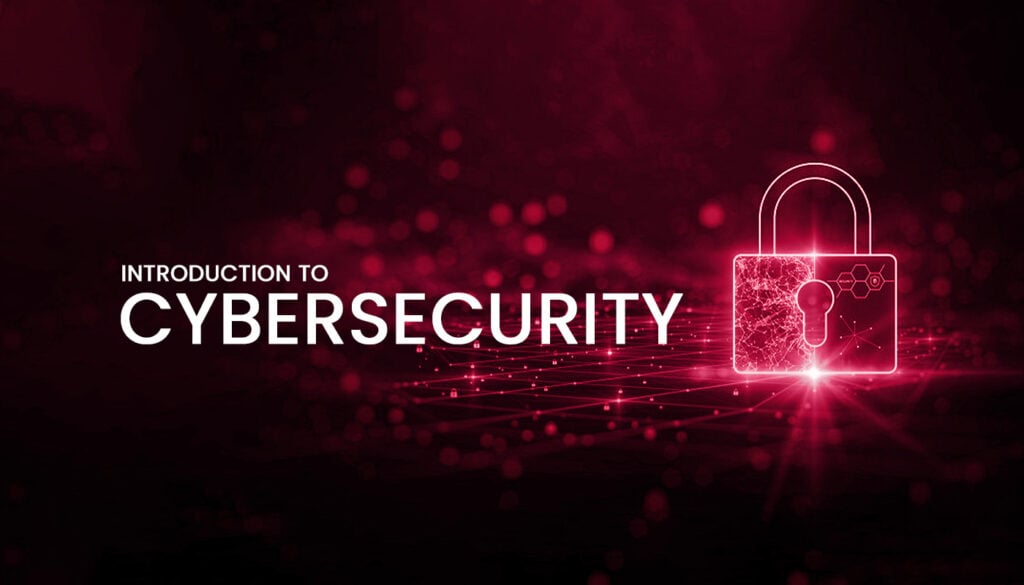- 09/10/2024
- by Miguel Sabater
Introduction to Cybersecurity

Definition of Cybersecurity
Cybersecurity refers to the practice of protecting systems, networks, and programs from digital attacks. These cyberattacks are usually aimed at accessing, changing, or destroying sensitive information, extorting money from users, or interrupting normal business processes.
Relevance and Importance
In our increasingly digital world, cybersecurity is critical for protecting data, maintaining privacy, and ensuring the integrity and availability of systems. With the rise of cyber threats, it is essential for individuals, businesses, and governments to implement robust cybersecurity measures to safeguard against potential attacks.
Types and Categories
Network Security
Network security involves measures to protect the integrity, confidentiality, and availability of data as it is transmitted across or accessed from a network. This includes technologies such as firewalls, intrusion detection systems (IDS), and secure socket layer (SSL) encryption.
Information Security
Information security focuses on protecting data from unauthorized access and modifications. This includes data encryption, access control mechanisms, and implementing policies to ensure data integrity and confidentiality.
Endpoint Security
Endpoint security refers to securing individual devices such as computers, mobile devices, and other endpoints that connect to a network. Techniques include antivirus software, endpoint detection and response (EDR) systems, and mobile device management (MDM).
Application Security
Application security involves measures to protect applications from threats that could exploit vulnerabilities. This includes practices like code reviews, penetration testing, and implementing security features within applications to protect against attacks such as SQL injection, cross-site scripting (XSS), and buffer overflows.
Cloud Security
Cloud security is a collection of policies, controls, procedures, and technologies that work together to protect cloud-based systems, data, and infrastructure. This includes securing access to cloud resources, protecting data stored in the cloud, and ensuring compliance with regulations.
Operational Security
Operational security (OpSec) focuses on processes for handling and protecting data assets. This includes strategies to identify critical information, analyze potential threats, and mitigate risks associated with operational processes.
Symptoms and Signs
Common Cyber Threats
- Phishing Attacks: Deceptive attempts to obtain sensitive information by masquerading as a trustworthy entity.
- Malware: Malicious software designed to disrupt, damage, or gain unauthorized access to computer systems.
- Ransomware: A type of malware that locks or encrypts data until a ransom is paid.
- Denial of Service (DoS) Attacks: Efforts to make a network service unavailable to its intended users.
Uncommon Cyber Threats
- Advanced Persistent Threats (APTs): Prolonged and targeted cyberattacks aimed at stealing information or causing damage.
- Zero-Day Exploits: Attacks that occur on the same day a vulnerability is discovered, before a fix becomes available.
- Cryptojacking: Unauthorized use of someone’s computer to mine cryptocurrency.
Causes and Risk Factors
Biological Factors
While not directly biological, human factors such as cognitive biases and social engineering play significant roles in cybersecurity vulnerabilities. Phishing attacks often exploit human psychology to trick individuals into divulging sensitive information.
Environmental Factors
The digital environment, including the prevalence of connected devices (Internet of Things), increases the attack surface for potential cyber threats. The complexity and interconnectivity of systems can lead to unintended security gaps.
Lifestyle Factors
Practices such as poor password management, neglecting software updates, and using unsecured Wi-Fi networks contribute to cybersecurity risks. Educating users on best practices is crucial to mitigate these risks.
Diagnosis and Tests
Common Diagnostic Tools
- Antivirus Scanners: Detect and remove malware from systems.
- Vulnerability Scanners: Identify security weaknesses in systems and applications.
- Penetration Testing: Simulated cyberattacks to evaluate the security of systems.
Advanced Diagnostic Tools
- Security Information and Event Management (SIEM) Systems: Aggregate and analyze log data from different sources to identify suspicious activities.
- Intrusion Detection Systems (IDS): Monitor networks for signs of potential intrusions.
- Forensic Analysis Tools: Investigate and analyze data breaches and security incidents.
Treatment Options
Medical Treatments
While cybersecurity does not involve medical treatments, the analogy can be drawn to incident response strategies and recovery plans. Just as medical treatments aim to restore health, cybersecurity measures aim to restore system integrity and functionality after an attack.
Therapies
- Patch Management: Regularly updating software to fix vulnerabilities.
- Access Control: Implementing measures to ensure only authorized users can access sensitive information.
Lifestyle Adjustments
- Regular Training: Educating employees and individuals on cybersecurity best practices.
- Implementing Multi-Factor Authentication (MFA): Adding an extra layer of security beyond just passwords.
Preventive Measures
Tips and Strategies
- Regular Software Updates: Ensure all software is up to date to protect against vulnerabilities.
- Strong Passwords: Use complex passwords and change them regularly.
- Data Encryption: Encrypt sensitive data to protect it during transmission and storage.
- Secure Networks: Use secure Wi-Fi networks and avoid public Wi-Fi for sensitive activities.
Conclusion
Summary of Key Points
Cybersecurity is a critical aspect of modern life, essential for protecting sensitive information and ensuring the integrity and availability of systems. By understanding the types of cybersecurity, recognizing symptoms of cyber threats, and implementing effective preventive measures, individuals and organizations can significantly reduce their risk of falling victim to cyberattacks.
Stay informed about the latest cybersecurity trends, continuously educate yourself and your team, and implement robust security measures to safeguard your digital assets. For further education, consider enrolling in cybersecurity courses and participating in industry forums.
Ready to elevate your cybersecurity?
Don’t leave your business vulnerable to cyberthreats. With Trucell’s expertise and partnership with SentinelOne, you can ensure strong protection for your network, data, and system.
Take the step in securing your business today!




Comments (6)
เลขเด็ดแม่นๆ
07/02/2025 - 11:52 am… [Trackback]
[…] Find More here to that Topic: trucell.com.au/blog/introduction-to-cybersecurity/ […]
ของพรีเมี่ยม
15/02/2025 - 2:33 pm… [Trackback]
[…] Here you can find 27224 additional Info to that Topic: trucell.com.au/blog/introduction-to-cybersecurity/ […]
Learn more
19/02/2025 - 7:46 am… [Trackback]
[…] Info to that Topic: trucell.com.au/blog/introduction-to-cybersecurity/ […]
789bet
03/03/2025 - 3:53 pm… [Trackback]
[…] Here you will find 26484 additional Information on that Topic: trucell.com.au/blog/introduction-to-cybersecurity/ […]
Angthong National Marine Park
04/03/2025 - 12:28 pm… [Trackback]
[…] Read More Information here to that Topic: trucell.com.au/blog/introduction-to-cybersecurity/ […]
ประวัติ sa casino
17/03/2025 - 11:39 am… [Trackback]
[…] Find More Info here to that Topic: trucell.com.au/blog/introduction-to-cybersecurity/ […]